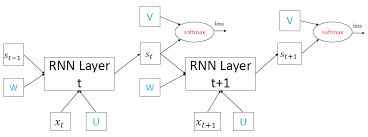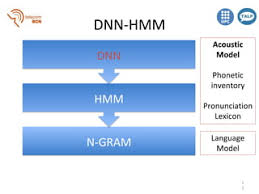Exploring Pixel Recurrent Neural Networks
Pixel Recurrent Neural Networks (PixelRNN) are a type of neural network architecture designed for generating realistic images pixel by pixel. This innovative approach to image generation has gained significant attention in the field of deep learning and computer vision.
Unlike traditional neural networks that process entire images at once, PixelRNN operates sequentially, generating one pixel at a time based on the previously generated pixels. This sequential generation process allows PixelRNN to capture intricate details and dependencies within the image, resulting in high-quality outputs.
PixelRNN utilizes recurrent neural networks (RNNs) to model the conditional distribution of each pixel given its predecessors. By considering the context of neighboring pixels, PixelRNN can generate images with realistic textures, structures, and patterns.
One of the key advantages of PixelRNN is its ability to generate diverse and visually appealing images across different datasets and domains. Whether it’s generating natural scenes, human faces, or artistic designs, PixelRNN demonstrates remarkable flexibility and creativity in image synthesis.
Researchers have further enhanced the capabilities of PixelRNN by introducing variations such as Conditional PixelCNN and Dilated Convolutional Networks. These advancements have improved the efficiency and performance of PixelRNN models, making them even more powerful for image generation tasks.
In conclusion, Pixel Recurrent Neural Networks represent a groundbreaking approach to image generation that leverages sequential processing and context modeling to produce realistic and diverse visual content. With ongoing research and innovations in this field, we can expect further advancements in the capabilities of PixelRNN models for various applications in computer vision and artificial intelligence.
8 Essential Tips for Mastering Pixel Recurrent Neural Networks (PixelRNN)
- Understand the concept of pixel recurrent neural networks (PixelRNN)
- Preprocess your image data appropriately before training PixelRNN
- Consider using convolutional layers in PixelRNN for spatial information extraction
- Experiment with different hyperparameters to optimize the performance of PixelRNN
- Use a large enough dataset to train PixelRNN effectively
- Regularize your PixelRNN model to prevent overfitting
- Monitor training progress and adjust learning rate if necessary
- Evaluate the performance of PixelRNN using appropriate metrics
Understand the concept of pixel recurrent neural networks (PixelRNN)
To effectively utilize pixel recurrent neural networks (PixelRNN), it is crucial to grasp the concept behind this innovative neural network architecture. PixelRNN operates by generating images pixel by pixel in a sequential manner, leveraging recurrent neural networks to model the conditional distribution of each pixel based on its predecessors. By understanding how PixelRNN captures dependencies between pixels and context within an image, one can harness its power to create high-quality and detailed visual outputs across various domains and datasets.
Preprocess your image data appropriately before training PixelRNN
Preprocessing your image data appropriately before training Pixel Recurrent Neural Networks is crucial for achieving optimal performance and generating high-quality outputs. By preparing and cleaning the input data effectively, you can enhance the network’s ability to learn complex patterns and dependencies within the images. Common preprocessing steps may include normalization, resizing, and augmenting the dataset to improve generalization and robustness. Ensuring that your image data is well-structured and tailored to the requirements of PixelRNN can significantly impact the model’s training efficiency and overall accuracy in image generation tasks.
Consider using convolutional layers in PixelRNN for spatial information extraction
When implementing Pixel Recurrent Neural Networks, it is beneficial to incorporate convolutional layers to aid in the extraction of spatial information. By integrating convolutional layers into PixelRNN architecture, the model can effectively capture spatial dependencies and patterns within the image data. This approach enhances the network’s ability to generate high-quality images with detailed textures and structures, improving overall performance in image synthesis tasks.
Experiment with different hyperparameters to optimize the performance of PixelRNN
To optimize the performance of PixelRNN, it is recommended to experiment with different hyperparameters. Hyperparameters play a crucial role in shaping the behavior and effectiveness of neural network models like PixelRNN. By adjusting parameters such as learning rate, batch size, and network architecture, researchers and practitioners can fine-tune the model to achieve better performance in terms of image generation quality, training efficiency, and convergence speed. Through systematic experimentation and tuning of hyperparameters, it is possible to unlock the full potential of PixelRNN and enhance its capability to generate high-quality images with greater accuracy and realism.
Use a large enough dataset to train PixelRNN effectively
When working with Pixel Recurrent Neural Networks (PixelRNN), it is crucial to utilize a large and diverse dataset for training purposes to ensure the effectiveness of the model. By providing a substantial amount of data, the PixelRNN can learn intricate patterns, textures, and dependencies within images, leading to higher-quality outputs and improved generalization capabilities. A large dataset enables the model to capture a wide range of variations and nuances present in real-world images, ultimately enhancing its performance in generating realistic and visually appealing results.
Regularize your PixelRNN model to prevent overfitting
Regularizing your PixelRNN model is a crucial step to prevent overfitting, ensuring that the model generalizes well to unseen data. By incorporating regularization techniques such as dropout, weight decay, or early stopping, you can effectively control the complexity of the model and improve its ability to learn meaningful patterns from the data. Regularization helps prevent the model from memorizing noise or irrelevant details in the training data, leading to better performance and robustness in generating high-quality images with PixelRNN.
Monitor training progress and adjust learning rate if necessary
Monitoring the training progress of pixel recurrent neural networks is crucial for optimizing performance and achieving desired results. By keeping a close eye on key metrics such as loss function values, accuracy, and convergence speed, developers can identify potential issues early on and make informed decisions to improve training efficiency. Adjusting the learning rate based on the observed progress can help prevent issues like overfitting or slow convergence, ensuring that the model learns effectively and produces high-quality outputs. This proactive approach to training management is essential for maximizing the potential of pixel recurrent neural networks in image generation tasks.
Evaluate the performance of PixelRNN using appropriate metrics
To assess the effectiveness of PixelRNN in image generation tasks, it is crucial to evaluate its performance using relevant metrics. Metrics such as perceptual similarity, structural similarity, and pixel-wise accuracy can provide valuable insights into the quality and fidelity of the generated images. By analyzing these metrics, researchers and practitioners can quantitatively measure the output of PixelRNN models and compare them against ground truth images or other state-of-the-art image generation methods. This systematic evaluation process helps in understanding the strengths and limitations of PixelRNN and guides further improvements in its architecture and training strategies for enhanced performance in generating high-quality images.



